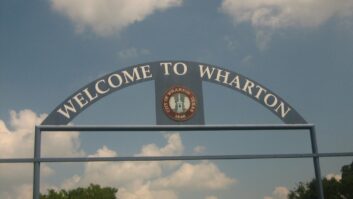FCC adopts new methodology for AM proofs
Jan 1, 2009 12:00 PM, By Harry Martin
At long last, the FCC is permitting directional AM stations and permittees to submit proofs of performance using moment modeling in lieu of proofs based on extensive field measurements.
In 2007 the Commission proposed to allow some, but not necessarily all, AM licensees to use moment method computer modeling for their directional AM proofs. Use of such modeling would relieve many AM stations of the exceedingly time-consuming and expensive burden of taking and tabulating field measurements. In late September the Commission adopted this proposal but said it would not become effective until the Office of Management and Budget (OMB) had reviewed and approved the revised rules.
The FCC advises that the OMB process is now complete and the new proof methodology is currently effective (as of Dec. 1), �except for the amendments to ��73.61, 73.68, 73.151, and 73.155,� which will not be fully effective until new forms are also approved by OMB. Since the listed sections are the only ones that were changed last September, the question is: What can an AM station do now?
The FCC’s staff advises that on an interim basis an AM licensee can prepare its 302-AM using moment modeling as outlined in the new rules and file it now, asking for program test authority in the process. There is no need to ask for a waiver. It is likely (but not guaranteed) the staff will favorably and promptly act on the PTA request, which would enable the station-applicant to commence full operation of its modified facilities. While the license application would remain in limbo until OMB approves the forms (thus clearing the way for the Commission to act on the application), the station would be free to operate in the meantime.
Stricter standards for community changes sought
Commissioners Copps and Adelstein issued joint dissents in two recent decisions involving FM channel moves. In their dissents, they were harshly critical of the manner in which the majority applied the �Tuck� analysis, that has been utilized for decades in the evaluation of proposed city-of-license changes. Both cases involved proposals to allow stations to move into larger, more urban markets.
The Tuck analysis was intended to serve as a brake on such migratory patterns, but the FCC has watered down enforcement by rubber stamping applicants’ claims that they do not really intend to serve the metro areas where their new proposed cities of license are located. The preference for stricter enforcement by the two Democrat commissioners is part and parcel of the ongoing localism debate. In their view, a rigorous application of the Tuck standard could and should serve as a check against homogenization of radio programming by ensuring that stations focus on the communities to which they are licensed.
Dateline
Feb. 1 is the deadline for submission of biennial ownership reports by radio stations in Kansas, Nebraska and Oklahoma.
Feb. 1 is the deadline for radio stations in the following states with more than 10 full-time employees to electronically file their Broadcast EEO Mid-Term Reports (Form 397) with the FCC: Kansas, Nebraska and Oklahoma.
Feb. 1 is the deadline for radio stations licensed in the following states to place their annual EEO Reports in their public files: Arkansas, Kansas, Louisiana, Mississippi, Nebraska, New Jersey, New York and Oklahoma.
Martin is a past president of the Federal Communications Bar Association and a member of Fletcher, Heald & Hildreth, Arlington, VA. E-mail[email protected].










